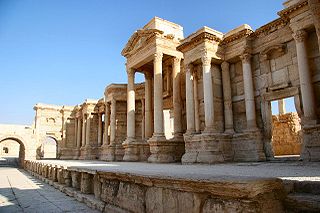Related Research Articles
The 620s decade ran from January 1, 620, to December 31, 629.
The 720s decade ran from January 1, 720, to December 31, 729.
The 700s decade ran from January 1, 700, to December 31, 709.
The 610s decade ran from January 1, 610, to December 31, 619.
The 630s decade ran from January 1, 630, to December 31, 639.
The 640s decade ran from January 1, 640, to December 31, 649.

Year 637 (DCXXXVII) was a common year starting on Wednesday of the Julian calendar. The denomination 637 for this year has been used since the early medieval period, when the Anno Domini calendar era became the prevalent method in Europe for naming years.

Year 638 (DCXXXVIII) was a common year starting on Thursday of the Julian calendar. The denomination 638 for this year has been used since the early medieval period, when the Anno Domini calendar era became the prevalent method in Europe for naming years.

Year 630 (DCXXX) was a common year starting on Monday of the Julian calendar. The denomination 630 for this year has been used since the early medieval period, when the Anno Domini calendar era became the prevalent method in Europe for naming years.

Year 778 (DCCLXXVIII) was a common year starting on Thursday of the Julian calendar, the 778th year of the Common Era (CE) and Anno Domini (AD) designations, the 778th year of the 1st millennium, the 78th year of the 8th century, and the 9th year of the 770s decade. The denomination 778 for this year has been used since the early medieval period, when the Anno Domini calendar era became the prevalent method in Europe for naming years.

Year 701 (DCCI) was a common year starting on Saturday of the Julian calendar, the 701st year of the Common Era (CE) and Anno Domini (AD) designations, the 701st year of the 1st millennium, the 1st year of the 8th century, and the 2nd year of the 700s decade. The denomination 701 for this year has been used since the early medieval period, when the Anno Domini calendar era became the prevalent method in Europe for naming years.

Year 720 (DCCXX) was a leap year starting on Monday of the Julian calendar. The denomination 720 for this year has been used since the early medieval period, when the Anno Domini calendar era became the prevalent method in Europe for naming years.
Year 640 (DCXL) was a leap year starting on Saturday of the Julian calendar. The denomination 640 for this year has been used since the early medieval period, when the Anno Domini calendar era became the prevalent method in Europe for naming years.

Year 611 (DCXI) was a common year starting on Friday of the Julian calendar. The denomination 611 for this year has been used since the early medieval period, when the Anno Domini calendar era became the prevalent method in Europe for naming years.

Yazdegerd III was the last Sasanian King of Kings of Iran from 632 to 651. His father was Shahriyar and his grandfather was Khosrow II.

The Battle of the Yarmuk was a major battle between the army of the Byzantine Empire and the Muslim forces of the Rashidun Caliphate. The battle consisted of a series of engagements that lasted for six days in August 636, near the Yarmouk River, along what are now the borders of Syria–Jordan and Syria-Israel, southeast of the Sea of Galilee. The result of the battle was a complete Muslim victory that ended Byzantine rule in Syria. The Battle of the Yarmuk is regarded as one of the most decisive battles in military history, and it marked the first great wave of early Muslim conquests after the death of the Islamic prophet Muhammad, heralding the rapid advance of Islam into the then-Christian Levant.

The early Muslim conquests or early Islamic conquests, also referred to as the Arab conquests, were initiated in the 7th century by Muhammad, the main Islamic prophet. He established a new unified polity in Arabia that expanded rapidly under the Rashidun Caliphate and the Umayyad Caliphate, culminating in Islamic rule being established across three continents. According to Scottish historian James Buchan: "In speed and extent, the first Arab conquests were matched only by those of Alexander the Great, and they were more lasting."

The Muslim conquest of the Levant, or Arab conquest of Syria, was a 634–638 CE invasion of Byzantine Syria by the Rashidun Caliphate. A part of the wider Arab-Byzantine Wars, the Levant was brought under Arab Muslim rule and developed into the provincial region of Bilad al-Sham. Clashes between the Arabs and Byzantines on the southern Levantine borders of the Byzantine Empire had occurred during the lifetime of Muhammad, with the Battle of Muʿtah in 629 CE. However, the actual conquest did not begin until 634, two years after Muhammad's death. It was led by the first two Rashidun caliphs who succeeded Muhammad: Abu Bakr and Umar ibn al-Khattab. During this time, Khalid ibn al-Walid was the most important leader of the Rashidun army.

The siege of Jerusalem (636–637) was part of the Muslim conquest of the Levant and the result of the military efforts of the Rashidun Caliphate against the Byzantine Empire in the year 636–637/38. It began when the Rashidun army, under the command of Abu Ubayda, besieged Jerusalem beginning in November 636. After six months, the Patriarch Sophronius agreed to surrender, on condition that he submit only to the Caliph. According to Islamic tradition, in 637 or 638, Caliph Umar traveled to Jerusalem in person to receive the submission of the city. The Patriarch thus surrendered to him.

The Battle of al-Qadisiyyah was an armed conflict which took place in 636 CE between the Rashidun Caliphate and the Sasanian Empire. It occurred during the early Muslim conquests and marked a decisive victory for the Rashidun army during the Muslim conquest of Persia.
References
- ↑ Nicolle 1994, p. 44.
- ↑ Nicolle 2009, p. 51.
- ↑ Nicolle 1994, p. 43.
- ↑ Nafziger, George F.; Walton, Mark W. (2003). Islam at War. Westport, CT: Greenwood Publishing. p. 30. ISBN 0-275-98101-0.
- ↑ Nicolle 1994, pp. 6, 19.
- ↑ Kirby 2000, p. 51.
Sources
- Kirby, D. P. (2000). The Earliest English Kings (revised ed.). Routledge. ISBN 0-415-24211-8.
- Nicolle, David (1994). Yarmuk 636 AD: The Muslim conquest of Syria. London: Osprey. ISBN 1-85532-414-8.
- Nicolle, David (2009). The Great Islamic Conquests AD 632–750. p. 52. ISBN 978-1-84603-273-8.